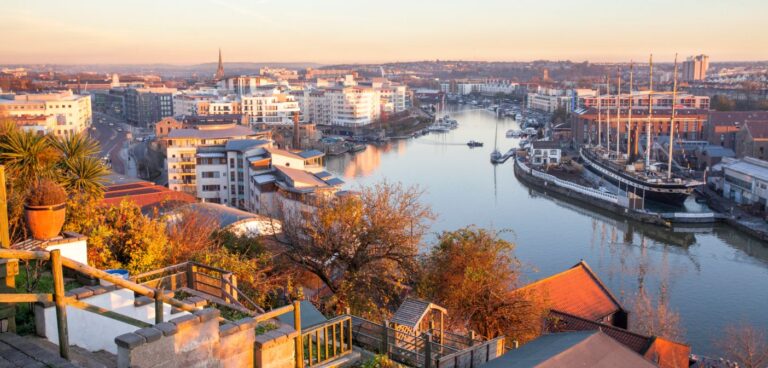Bristol City Council has proposed a second wave of major transport improvements to enable active travel and use of public transport as part of work to reduce air pollution and support social distancing in the city.
Earlier this year, Bristol mayor Martin Rees unveiled plans to accelerate existing transport ambitions to improve walking, cycling and bus journeys in the city centre during the pandemic.
Since then the council has pedestrianised the Old City area and closed Bristol Bridge to general traffic, as well as installed new temporary bike lanes in the city centre and widened pavements across the city.
Bristol City Council, in partnership with the West of England Combined Authority, has now applied for further UK government funding to extend and strengthen the temporary work already done. Additional proposals to work with the community and close several neighbourhood roads to through traffic have also been put forward.
According to the council, the long-term ambition is to make these changes permanent as part of the transformation of Bristol’s transport network, with new road layouts that create cleaner air and better bus, walking and cycling journeys, alongside ongoing plans for a mass transit public transport system.
Mayor Marvin Rees said: “The pandemic has had huge impacts on our usual travel habits and, despite its challenges, we saw air pollution levels drop by almost half during the months of lockdown with big increases in walking and cycling. We want to capture those benefits and protect the long-term public health of the city as well as the viability of our public transport services that provide real value to our communities.
“This next phase will strengthen the new schemes and we will be talking to communities across the city to determine the next steps for creating more liveable neighbourhoods that are free from traffic congestion and pollution.”
Phase two of Bristol’s post-Covid-19 transport improvements will see extensions of work already done in phase one, including temporary arrangements improved to strengthen schemes, such as replacing barriers with semi-permanent bollards.
New cycling improvements include new protected bike lanes and improvements to pedestrian crossing facilities and new on-street, secure cycle shelters across the city for residents in flat or terraced apartments.
The council said it will also consult with the local community on a series of proposed road closures. The proposals would retain access to the roads under consideration but prevent through traffic using them by closing one end. This, according to the council, would give local businesses and residents more space to use the roads, and provide safer walking and cycling routes.
Many of the closures have been suggested by residents using an online interactive map that was launched to get ideas from the local community following the announcement of phase one. Further engagement with the various communities will take place before plans are finalised.
Work on phase two is anticipated to start in winter, with the schedule led in part by the community feedback as plans are confirmed, developed and finalised.





